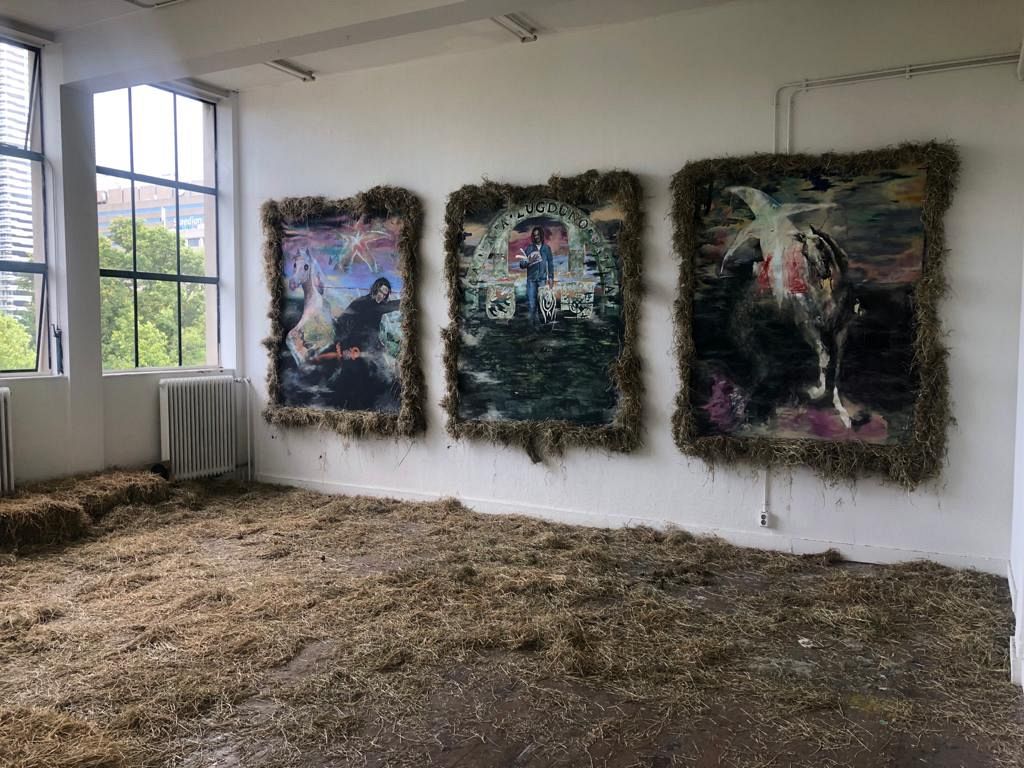
You are led into this space by a scent trail. The scent meets you before any painting can- Hay. This is the framing of the work- the inclusion of a more diverse sensory engagement. The closer to the paintings you are the more engulfed you become, a slight warning for those with hayfever.
This work consists of three large paintings. They explore cross-cultural heritages and delve into medieval lexicons. They explore the artist’s role as student, the artist within an institution.
Filled with hay and horse manure the artwork references the homonym function of the word 'stable' (or stables) creating a stable environment.
The horses are referenced within the paintings and my surname; the Palfreyman being someone who took care of the horses once ridden by nobility.
EMERGING GENDER RELATIONS IN ‘HOW TO TRAVEL SAFE’ (2016) AND ‘MYSELF AND I’ (2016)
Thesis
This paper uses two related case studies to critique emerging gender relations with particular reference to the influence of institutional conventions (the art academy). It utilises the theoretical frameworks of Linda Nochlin, Alice Walker, Bell Hooks and Eliza Steinbock in order to interpret the gender relations represented by Narges Mohammadi and Quentley Barbara while still students at The Royal Academy of Art The Hague. Through the objective analysis of ‘How to Travel Safe’ (2016) and ‘Myself and I’ (2016) this paper will demonstrate how the artworks are of particular importance as representations of an emerging inclusivity within gender relations. The results and conclusions of these analysis show a movement away from the masculine ‘greatness’ observed by Nochlin (1971), toward an emerging inclusive ‘greatness’.